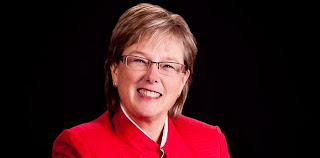Orginal post in: Chronicle journal.com
 |
| Diane Imrie |
This past weekend I had the wonderful opportunity of volunteering at the 2012 Canadian Wheelchair Curling Championship at the Fort William Curling Club.
Congratulations to the organizers that worked so hard putting on this great national championship.
As I was doing my small part in helping out, I was reminded of the fact of just how many volunteers it takes to host a sporting event. Volunteerism and sport truly go hand in hand. So often it is the champions of an event that garner the headlines, but each time a champion hoists a trophy or bites a gold medal, you can rest assured that more often than not a volunteer has played a part in helping them along their road to victory.
Aside from the volunteerism that takes place each and every day in our local sporting venues, our volunteers have also hosted an incredible number of national and international events over the years.
There are far too many to mention in this column so I thought I would highlight one national event that was supported by an estimated 5,000 volunteers and encompassed the entire community.
Statistically speaking, if you are reading this column chances are you either volunteered at this event yourself, or knew someone who did. I am talking about the 1981 Jeux Canada Summer Games that took place from Aug. 9 to Aug. 22 and welcomed 3,600 athletes from all across our nation, competing in 17 different sports.
The opening ceremonies were held at the Fort William Stadium and welcomed close to 13,000 spectators and featured the awakening of Nanabijou with a 1,000-voice choir of school children and 400 colourful dancers and the lighting of the torch by local athletes Susan Kainulainen and Larry Ukrainec.
The mascot for the event was Choklit Moose which was designed by local graphic designer Ken Campbell, who also designed the logo, and named through a contest that was won by local teenager Dan Stark.
The medals were designed by local artist Gerry McEachern.
The centre piece of the event was the Canada Games Complex which was built by local contractors Gateway Builders at a cost of $7.1 million and included a pool, diving complex and racquetball courts.
At the time, the 77-metre pool was the largest of its kind in North America, taking five days to fill with 755,000 gallons of water.
In preparation for the event, a number of existing sports fields and facilities were fixed up and new ones created. Renovations were made to the Fort William Gardens and Port Arthur Stadium. The Fort William Stadium was outfitted with a brand new 400-metre track and field, and upgraded tennis courts, with some assistance coming from a lottery held by the local branches of the Royal Canadian Legion.
The community spirit and involvement that developed as a result of this sporting event was truly inspiring.
Volunteers sewed costumes, schools hosted walkathons and local groups held raffles, all in support of the Games.
A cultural program was held that brought together the communities of sport and art.
A healthy living and fitness campaign and youth exchange program were also initiated.
The legacy of the 1981 Canada Summer Games remains today, over 30 years after the air show and historic rendezvous of the closing ceremonies. It lives on in the officials and volunteers that were trained for the event, the 450,000 visits that are made to the Canada Games Complex each year which helps develop a healthier community and the Olympic-calibre athletes such as Mary DePiero who were provided with facilities to develop their athletic skill.
The other legacy from the hosting of the 1981 Canada Summer Games, and all of the events that our volunteers have hosted over the years, is the sense of pride that is felt each time people come together in the true spirit of volunteerism to work towards a common goal.
The fact that Thunder Bay is known as a sports community is not just because of our athletes, it is also because of our incredible volunteers.
Until next time, keep that sports history pride alive.
Diane Imrie is the executive director of the Northwestern Ontario Sports Hall of Fame. Her column runs every second Thursday.

No comments:
Post a Comment